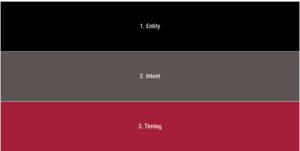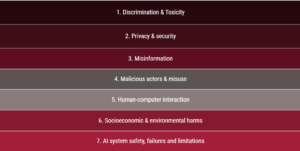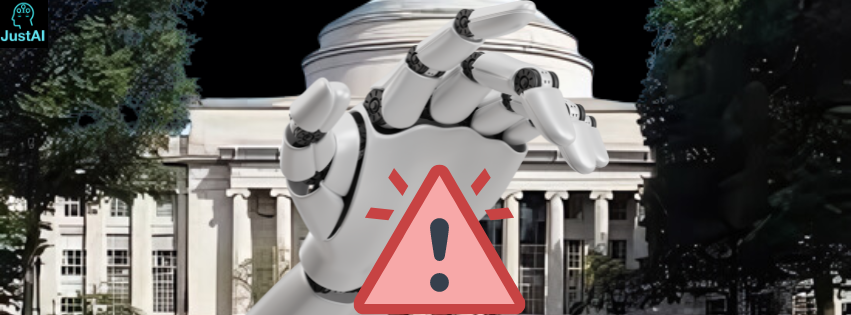Key Highlights:
- Comprehensive AI Risk Database: The repository contains over 700 documented AI risks, extracted from 43 different AI risk classification frameworks, covering areas often overlooked in existing risk assessments.
- Detailed Classification Systems: It categorizes AI risks using a Causal Taxonomy (why and how risks occur) and Domain Taxonomy (broad domains like misinformation or discrimination), offering a multi-dimensional view of AI challenges.
- Addressing Framework Gaps: The repository highlights the inconsistencies in current AI risk frameworks, ensuring a more holistic approach to AI risk management by addressing underrepresented risks like environmental impact and information degradation.
As AI continues to rapidly integrate into our lives and industries, the potential risks that come with it are growing as well. The recent findings by researchers from MIT’s Computer Science and Artificial Intelligence Laboratory (CSAIL) and MIT FutureTech Lab shine a light on these risks and the gaps in current frameworks designed to address them. In response, the team has developed the first-ever comprehensive AI Risk Repository, published on 15th August 2024.
A Rising Concern: AI’s Rapid Growth and Unseen Risks
AI is being adopted across various sectors at a rapid pace. A Census data (Tracking Firm Use of AI in Real Time: A Snapshot from the Business Trends and Outlook Survey) reveals a notable increase in AI adoption across US industries, with usage rising by 47%, from 3.7% in September 2023 to 5.45% by February 2024. However, this fast adoption has left many organizations unprepared for the risks associated with AI. As Dr. Neil Thompson, head of the MIT FutureTech Lab, points out, existing AI risk frameworks miss about 30% of the potential risks. These gaps could lead to significant challenges for companies, governments, and individuals alike.
What is the AI Risk Repository?
The AI Risk Repository is a groundbreaking tool designed to address these gaps. The MIT research team, along with collaborators from the University of Queensland, the Future of Life Institute, KU Leuven, and Harmony Intelligence, created this repository as a living database containing over 700 documented AI risks. These risks are categorized into 7 domains and 23 Sub-domains, making it easier for users to navigate the complex landscape of AI-related challenges.
Why the AI Risk Repository Matters
The researchers identified critical flaws in how AI risks are currently addressed. According to their findings, most AI risk frameworks focus too heavily on certain risks while ignoring others. For example, 44% of these frameworks address misinformation, but only 12% cover risks related to the pollution of the information ecosystem, which can degrade information quality through AI-generated spam. This inconsistent coverage poses a significant issue, as Dr. Thompson states: “If everyone focuses on one type of risk while overlooking others of similar importance, that’s something we should notice and address.”
The AI Risk Repository is a solution to this issue. It provides decision-makers with a comprehensive checklist to evaluate AI risks holistically, helping organizations better prepare for and mitigate AI-related issues.
How the AI Risk Repository is Organized
The AI Risk Repository consists of three major components that work together to map out the complex landscape of AI risks:
- AI Risk Database: This database includes over 700 risks extracted from 43 AI risk classification frameworks. It provides detailed information about each risk, including supporting evidence and source information.
- Causal Taxonomy of AI Risks: This system classifies how, when, and why AI risks occur. For instance, it looks at the entity responsible for the risk (human or AI), the intent behind it (intentional or unintentional), and when the risk happens (pre-deployment or post-deployment).

- Domain Taxonomy of AI Risks: This taxonomy organizes risks into seven broad domains, such as “Misinformation” and “Discrimination & Toxicity,” and 23 subdomains, including “False or Misleading Information” and “Bias in Decision Making.”

These three components offer a way for users to explore AI risks from different perspectives, helping them understand not only what risks exist but also why and how they arise.
Addressing the Gaps in AI Risk Frameworks
The MIT team found that existing AI risk frameworks are often incomplete. For example, while many frameworks address AI’s potential to perpetuate discrimination, fewer frameworks cover risks related to the degradation of information quality or AI’s environmental impact. This fragmented approach leaves organizations exposed to risks they may not even be aware of.
By consolidating these risks into a single repository, MIT’s AI Risk Repository offers a clearer, more complete picture of the challenges posed by AI. The repository is also designed to be updated regularly, ensuring it stays current as new AI risks emerge.
Who Can Benefit from the AI Risk Repository?
The AI Risk Repository is designed for a wide range of users, including researchers, developers, policymakers, and enterprises. Whether you are building AI systems, regulating them, or simply trying to understand their potential impact, this repository serves as a valuable resource for identifying risks and developing mitigation strategies.
In future phases of the project, the MIT team plans to expand the repository to include more detailed insights, such as the likelihood of specific risks and the best ways to address them for different stakeholders. According to Dr. Thompson, “We plan to use this [repository] to identify shortcomings in organizational responses” and to provide “more useful information about which risks experts are most concerned about (and why).”
A Living Document for the Future of AI
The AI Risk Repository is not a static resource; it’s a living document meant to grow alongside the rapidly evolving AI landscape. As new research is conducted and new risks are identified, the repository will be updated to reflect these changes. Users are encouraged to contribute feedback, suggest new resources, and help refine the database as AI technology continues to develop.
This collaborative approach will help ensure that the AI Risk Repository remains a valuable tool for managing the complex risks associated with AI. As Dr. Thompson puts it, “Now [researchers and organizations] have a more comprehensive database, so our repository will hopefully save time and increase oversight.”
Final Thoughts: Bringing Clarity to AI Risks
As AI continues to evolve and integrate into more aspects of our lives, understanding its risks is more important than ever. MIT’s AI Risk Repository provides an unprecedented resource for anyone looking to navigate this complex and rapidly changing landscape. By consolidating over 700 risks into a single, accessible database, the repository offers a crucial tool for ensuring that the development and deployment of AI remain safe, ethical, and responsible.
References
- https://youtu.be/fCj-wJz6VCY
- https://www.datanami.com/2024/08/15/mit-releases-a-comprehensive-repository-of-ai-risks/
- https://cdn.prod.website-files.com/669550d38372f33552d2516e/66bc918b580467717e194940_The%20AI%20Risk%20Repository_13_8_2024.pdf
- https://venturebeat.com/ai/mit-releases-comprehensive-database-of-ai-risks/
- https://www.spiceworks.com/tech/artificial-intelligence/news/mit-unveils-comprehensive-database-artificial-intelligence-risks/
- https://techcrunch.com/2024/08/14/mit-researchers-release-a-repository-of-ai-risks/
- https://www.zdnet.com/article/ai-risks-are-everywhere-and-now-mit-is-adding-them-all-to-one-database/
- https://observer.com/2024/08/mit-launches-the-first-ever-comprehensive-database-of-a-i-risks/
- https://www.csoonline.com/article/3487207/mit-delivers-database-containing-700-risks-associated-with-ai.html
- https://www.infodocket.com/2024/08/14/new-research-resource-from-mit-csail-ai-risk-repository/
- https://www.census.gov/hfp/btos/downloads/CES-WP-24-16.pdf
- https://airisk.mit.edu/

